#Jordan Cronenweth
Explore tagged Tumblr posts
Text

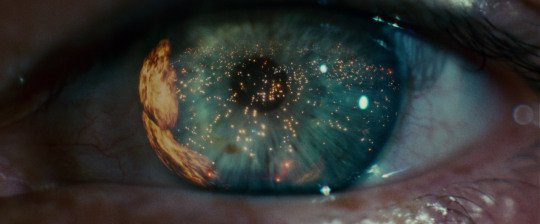

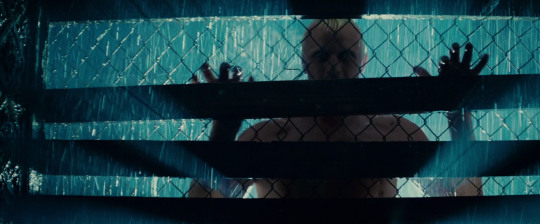






— Blade Runner (1982) dir. Ridley Scott
#blade runner#ridley scott#jordan cronenweth#harrison ford#1980s movies#perfect shot#aesthetic#cinematography#film photography#movie#screencap#movie scenes#screenshot#movie scenery#cyberpunk#futuristic#neon#rick deckard#do androids dream of electric sheep#philip k. dick#cyber#1982#sean young#rachael#roy batty#rutger hauer
373 notes
·
View notes
Text


#blade runner 2049#roger deakins#denis villeneuve#blade runner#ridley scott#jordan cronenweth#films#movies#movie#filmedit#cinematography#cinemapix#ryan gosling
26 notes
·
View notes
Text
The 80s aesthetic largely came from this movie, where it was fully formed. A masterpiece of design and filming by visual futurist Syd Mead and DoP Jordan Cronenweth.


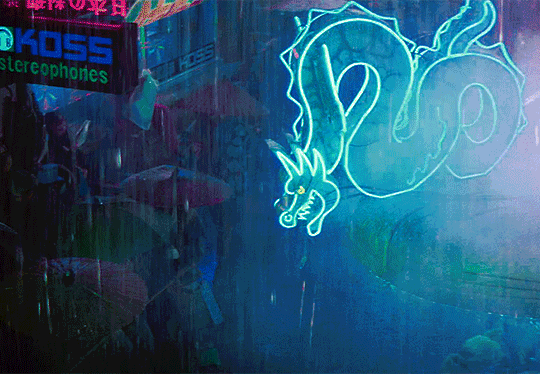
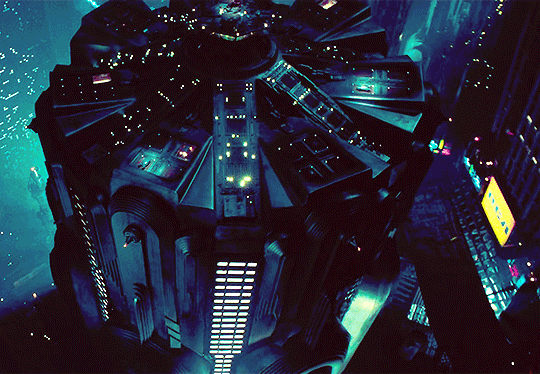

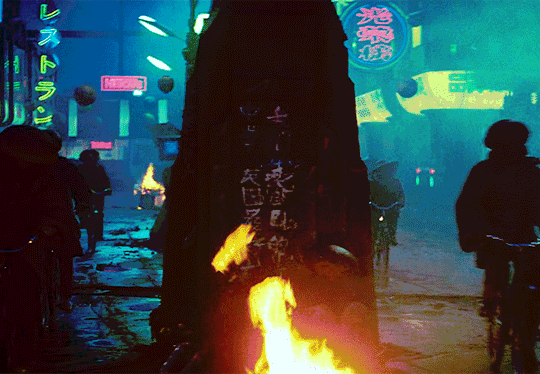

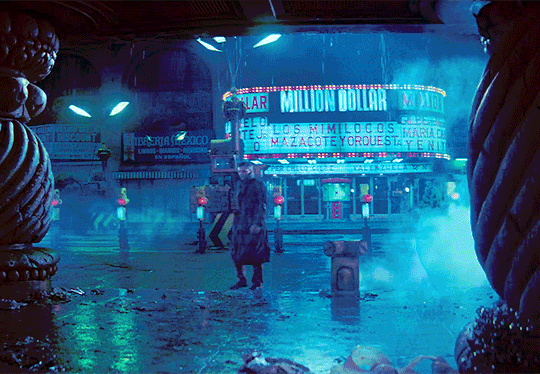

NEON LIGHTS - Blade Runner (1982)
#movies#classic movies#Blade Runner#Ridley Scott#80s movies#80s aesthetic#Syd Mead#Jordan Cronenweth
4K notes
·
View notes
Text

Robert Mulligan - The Nickel Ride (1974)
1 note
·
View note
Text


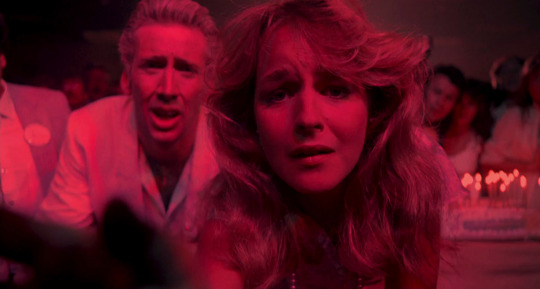
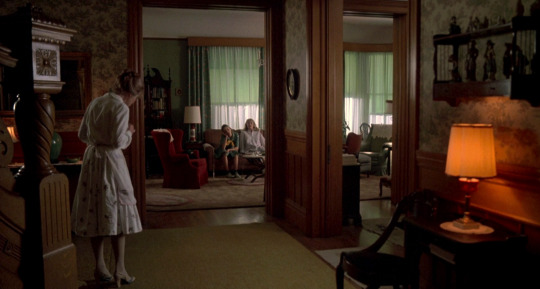
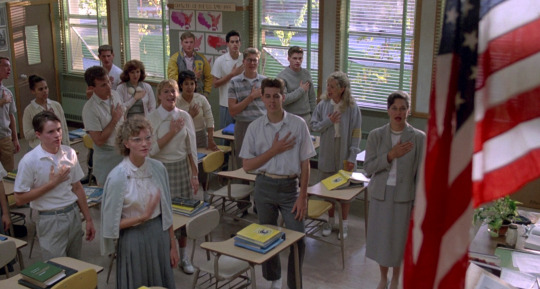

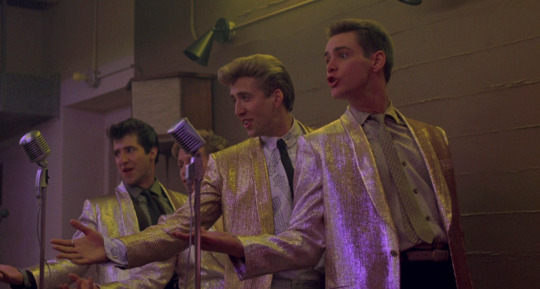




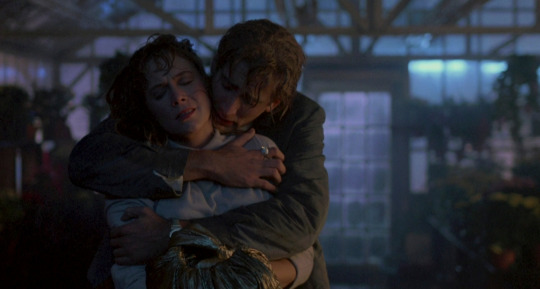
Peggy Sue Got Married (1986) Dir. Francis Ford Coppola
KNOWING WHAT YOU KNOW NOW, WHAT WOULD YOU DO DIFFERENTLY?
Cinematography by Jordan Cronenweth
#kathleen turner#nic cage#nicolas cage#barry miller#catherine hicks#joan allen#kevin j o'connor#jim carrey#lisa jane persky#sofia coppola#francis ford coppola#jordan cronenweth
0 notes
Text

We Make Movies Better
directed by Jeff Cronenweth and Tim Cronenweth, 2021
#We Make Movies Better#Jeff Cronenweth#Tim Cronenweth#movie mosaics#Nicole Kidman#Emma Stone#Ryan Gosling#Gal Gadot#Michael B. Jordan#AMC#AMC Theatres
13 notes
·
View notes
Text





Blade Runner (1982)
Director: Ridley Scott DOP: Jordan Cronenweth Production Design: Lawrence G. Paull Art Direction: David L. Snyder
#cinematography#film stills#visual storytelling#blade runner#blade runner 1982#ridley scott#harrison ford#daryl hannah#philip k dick#movies based on books#sci fi#science fiction
45 notes
·
View notes
Text








Blade Runner, 1982
Directed by Ridley Scott Cinematography by Jordan Cronenweth Production design by Lawrence G. Paull Art Direction by David L. Snyder Set Decoration by Linda DeScenna, Leslie McCarthy-Frankenheimer, Thomas L. Roysden
10 notes
·
View notes
Text

Rutger Hauer and Harrison Ford in Blade Runner (1982)
Dir.Ridley Scott
The film is set in a dystopian future Los Angeles of 2019, in which synthetic humans known as replicants are bio-engineered by the powerful Tyrell Corporation to work on space colonies. When a fugitive group of advanced replicants led by Roy Batty (Hauer) escapes back to Earth, burnt-out cop Rick Deckard (Ford) reluctantly agrees to hunt them down.
*Director Sir Ridley Scott and director of photography Jordan Cronenweth achieved the famous "shining eyes" effect by using a technique invented by Fritz Lang known as the "Schüfftan Process": light is bounced into the actors' and actresses' eyes off of a piece of half mirrored glass mounted at a forty-five-degree angle to the camera.
#Blade Runner#1982#film#cinema#movie#action#drama#scifi#fantasy#futuristic#dystopian future#humans#androids#Rutger Hauer#Harrison Ford#Ridley Scott#replicants#Rick Deckard#legendary film#Vaggelis music#just rewatched#masterpiece#like tears in rain
2 notes
·
View notes
Photo

Escenas Películas : Blade Runner (1982). Director de fotografía : Jordan Cronenweth
Blade Runner es una película de ciencia ficción estadounidense dirigida por Ridley Scott, estrenada en 1982. Fue escrita por...
https://clubdelastresartes.blogspot.com/2021/10/escenas-peliculas-blade-runner-1982.html
3 notes
·
View notes
Text
Cast: Harrison Ford, Rutger Hauer, Sean Young, Edward James Olmos. M. Emmet Walsh, Daryl Hannah, William Sanderson, Joanna Cassidy. Screenplay: Hampton Fancher, David Webb Peoples, based on a novel by Philip K. Dick. Cinematography: Jordan Cronenweth. Production design: Laurence G. Paull. Film editing: Marsha Nakashima, Terry Rawlings. Music: Vangelis

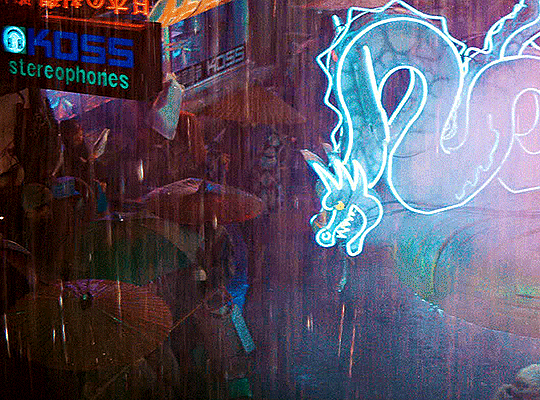
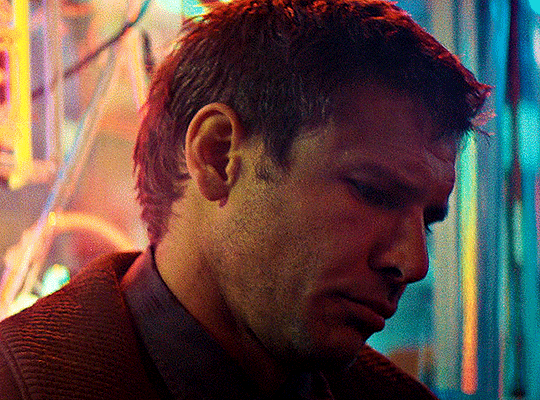
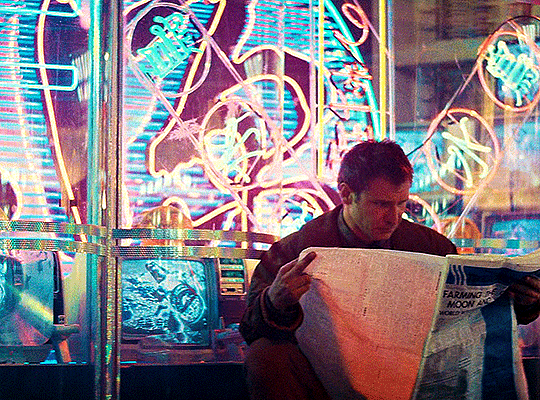
Harrison Ford as Rick Deckard Blade Runner (1982) dir. Ridley Scott
6K notes
·
View notes
Text
Artist Research -Bladerunner

(I really like Blade Runner. I fell in love with the aesthetics of cyberpunk dystopias as I played CYBERPUNK77 over lockdown) An aspect that I wanted to experiment with in my project was light. I realised the connection I could make while we were talking about blade runner in class.

In Blade Runner lighting is the first thing that comes to mind for me, when talking about the art direction. It was directed by Ridley Scott and the movie was shot by the famous cinematographer Jordan Cronenweth manning the camera. Lighting is a key aspect that communicates the mood, tone, and themes of the film. The lighting of the movie is an active participant in conveying the ideas of the movie.

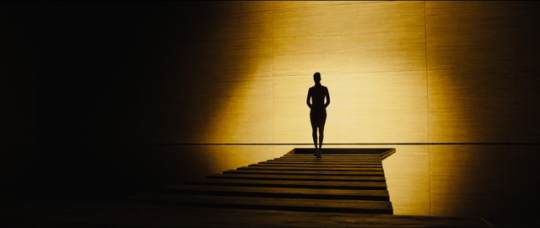


When I think Blade Runner, extreme contrast lighting comes into mind. Where the characters are usually silhouetted by intense shadows. It is most obvious in the city during the night time. The contrast between the bright artificial light and the otherwise unappealing or grimy, black cityscape reflects the film's themes of moral ambiguity, existential horror and loneliness. Almost like a Noir film that got to use one colour extra at any time. Black white and yellow for example.

(A Blade Runner poster that I own)
The neon signs illuminating the urban landscape of Blade Runner are among its many iconic elements. There are bright, shimmering colours mixing vividly with the rainy, dismal world they illuminate, and contribute to an atmosphere of false, consumerist future.

High tech walls of neon billboards, buildings, and advertising all contribute to the cold dystopian identity of the movie. These tacky, vibrant colors are sterile and unnatural, unlike the human element which is lacking in this dire vision of the future. The creative use of lighting adds to the mechanization and commodification of this version of the world. In which emotions and connections seem artificial.

The consistent rain in Blade Runner is key to aiding the lighting. The rain causes more parts of the city to reflect light and makes it create a shimmery appearance, enhancing the effect of the lighting itself. Rain does also set the overall mood. The lighting and rain work together. Showing us into a damp, chilly, and high-tech environment that only serves to enhance the effects of a decaying, oppressive culture.
youtube
1 note
·
View note
Text

Director Sir Ridley Scott and cinematographer Jordan Cronenweth employed a technique inspired by Fritz Lang and cinematographer Eugen Schüfftan, known as the "Schüfftan Process," to achieve the iconic "shining eyes" effect in Blade Runner. This involved bouncing light into the actors' eyes using a piece of half-mirrored glass positioned at a forty-five-degree angle to the camera.
In an intriguing article from the July 1982 issue of American Cinematographer, the details about the technique were revealed. Scott and Cronenweth utilized a two-way mirror with 50% transmission and 50% reflection, positioned at a forty-five-degree angle in front of the camera lens.
To create the effect, a light was directed into the mirror along the same axis as the camera lens, causing it to reflect into the eyes of the subject. This lighting apparatus, referred to as a pup, was compact and equipped with a dimmer to adjust light intensity as needed. As a result, light was reflected into the subject's eyes without being directly captured by the camera.
0 notes
Text

#ProyeccionDeVida
📣 Kino Cat / Cine Tulipán, presenta:
🎬 “EL CAZADOR IMPLACABLE” [Blade Runner]

🔎 Género: Ciencia Ficción / Acción / Neo-Noir / Thriller Futurista / Cyberpun / Distopía / Robots / Película de Culto
⌛️ Duración: 117 minutos
✍️ Guion: David Webb Peoples y Hampton Fancher.

📕 Novela: ¿Sueñan los Androides con Ovejas Eléctricas? (1968) de Philip K. Dick (Estados Unidos)
📷 Fotografía: Jordan Cronenweth
🎼 Música: Vangelis

🗯 Argumento: Noviembre del año 2019, a principios del siglo XXI, la poderosa Tyrell Corporation creó, gracias a los avances de la ingeniería genética, un robot llamado Nexus 6, un ser virtualmente idéntico al hombre pero superior a él en fuerza y agilidad, al que se dio el nombre de Replicante. Estos robots trabajaban como esclavos en las colonias exteriores de la Tierra. Después de la sangrienta rebelión de un equipo de Nexus-6, los Replicantes fueron desterrados de la Tierra. Brigadas especiales de policía, los Blade Runners, tenían órdenes de matar a todos los que no hubieran acatado la condena. Pero a esto no se le llamaba ejecución, se le llamaba "retiro". Tras un grave incidente, el ex Blade Runner Rick Deckard es llamado de nuevo al servicio para encontrar y "retirar" a unos replicantes rebeldes..

👥 Reparto: Harrison Ford (Rick Deckard), Rutger Hauer (Roy Batty), Sean Young (Rachael), Daryl Hannah (Pris), Edward James Olmos (Gaff), William Sanderson (J.F. Sebastian), Joanna Cassidy (Zhora), Brion James (Leon Kowalski) y Joe Turkel (Eldon Tyrell).

📢 Dirección: Ridley Scott
© Productoras: Warner Bros., Ladd Company & Shaw Brothers.
🌎 País: Estados Unidos
📅 Año: 1982

📽 Proyección:
📆 Martes 12 de Noviembre
🕘 9:15pm.
🐈 El Gato Tulipán (Bajada de Baños 350 – Barranco)
🚶♀️🚶♂️ Ingreso libre.
0 notes
Text

Director Sir Ridley Scott and cinematographer Jordan Cronenweth employed a technique inspired by Fritz Lang and cinematographer Eugen Schüfftan, known as the "Schüfftan Process," to achieve the iconic "shining eyes" effect in Blade Runner. This involved bouncing light into the actors' eyes using a piece of half-mirrored glass positioned at a forty-five-degree angle to the camera.
In an intriguing article from the July 1982 issue of American Cinematographer, the details about the technique were revealed. Scott and Cronenweth utilized a two-way mirror with 50% transmission and 50% reflection, positioned at a forty-five-degree angle in front of the camera lens.
To create the effect, a light was directed into the mirror along the same axis as the camera lens, causing it to reflect into the eyes of the subject. This lighting apparatus, referred to as a pup, was compact and equipped with a dimmer to adjust light intensity as needed. As a result, light was reflected into the subject's eyes without being directly captured by the camera.
0 notes